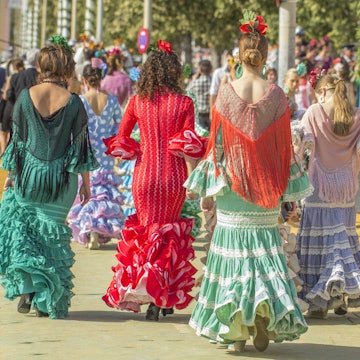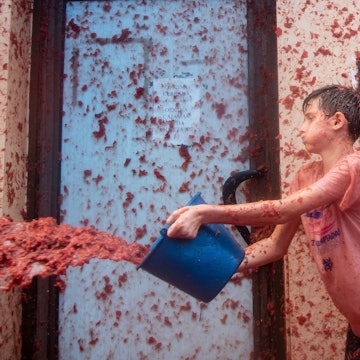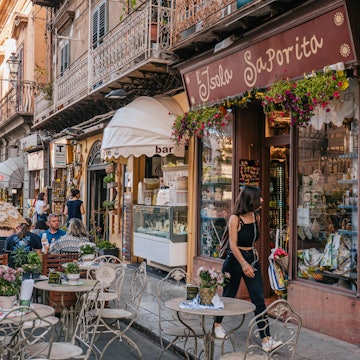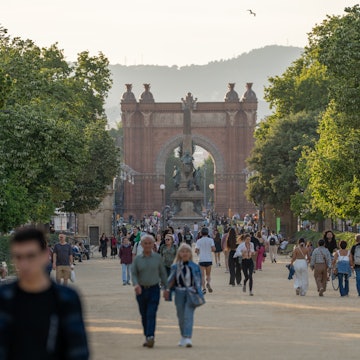

Plan your visit to Valencia with this seasonal guide. Getty Images
With around 300 days of sunshine a year and a deliciously warm climate, it's clear why Valencia is popular year-round.
The elegant, tangled streets of the old town and the spaceship-like structures of Ciudad de las Artes y las Ciencias don't change much month to month, but it's still important to keep the seasons in mind – they will have an impact on what's available during your stay. Want to cycle past sweetly-scented blossoming orange groves? Revel in the chaotic celebrations of Las Fallas? Get messy at a traditional grape stomping festival? Sip cocktails at a bohemian beach bar? It all depends on the time of year. Here's our guide to when (and how) to visit this beautiful Spanish city.
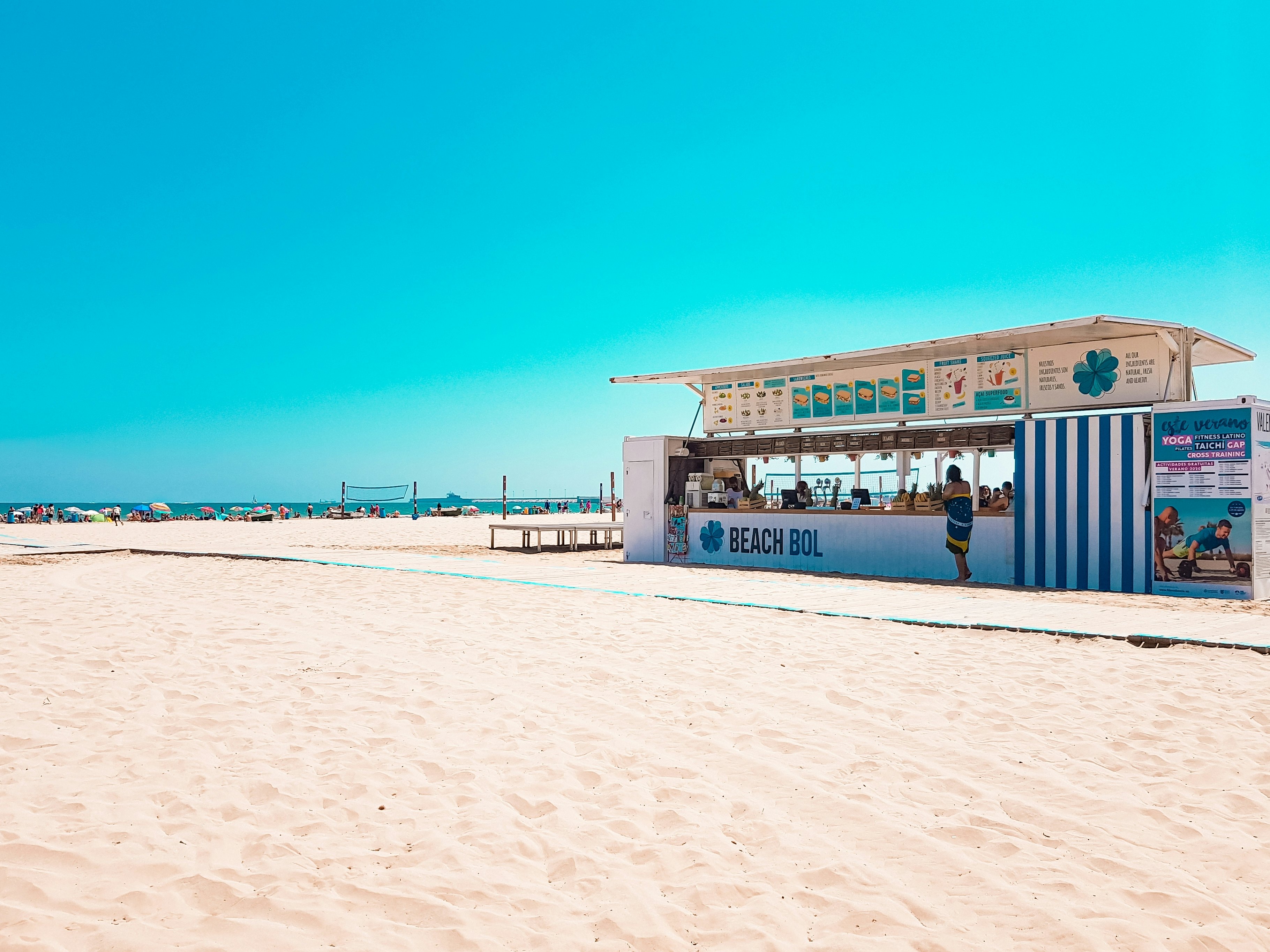
July and August are best for beach days and visiting galleries
This is peak summer in Valencia, and while visitors flock to the city for guaranteed sunshine, locals flee to cooler climates. The average day temperature in July is 27°C (81°F), and hot nights can feel stifling. Most traditional bars and restaurants will close during July and August, but the city by no means shuts down.
Beach bars (chiringuitos) pop up on the sand in the summer, from Playa de Las Arenas to Playa de la Patacona. Beat the heat with a mojito, sunlounger and the cooling sea breeze. El Chiringuito de La Más Bonita hangs colorful pompoms over the sun-dappled terrace, while Tres14 has DJs and all-day dancing.
Valencia's fabulous museums and art galleries offer culture and air conditioning – ideal for scorching days. Duck into Centro del Carmen Cultura Contemporánea, a hushed space with 13th-century cloisters and exhibitions that shine a light on local issues. Next, visit L’Institut Valencià d’Art Modern for a hearty dose of contemporary art from around the world. Don't miss Sala de la Muralla – a secluded basement gallery with a section of the 14th-century city wall.
August is also the time to check out the famous La Tomatina festival which is an hour west of the city.

September and October are best for grape harvests and nights out
The temperature mellows during autumn but days are still sun-soaked; balmy evenings make perfect bar-hopping weather. Expect to be out until the small hours – you'll need that time to visit all the brilliant bars. Start at Splendini Bar i Discos in L'Eixample, where friends sip bottles of beer and DJs dance around in between playing soul records. Head to Russafa for more artsy bars (Ubik Café is a bookshop and cafe that morphs into a bar come nightfall) or visit western Valencia to listen to home-grown rock bands in Centro Excursionista or dance to pin-sharp house music at Hifi.
This is also the perfect time to visit Requena, Valencia's wine region. Around 1 hour by car from the city center, wineries such as Pago de Tharsys host grape harvest parties in early October. Spend the afternoon stomping on grapes and drinking Bobal (the local red grape) before sleeping in a cabin between the vines.
November to January is best for cheaper hotels and festive fun
Valencia's streets look even more beautiful dressed with fairy lights and Christmas trees. Bright days still reach around 17°C (63°F) in December, while the evenings are cool and fresh. For maximum festive feels, visit the ice skating rink in Plaza del Ayuntamiento. Nativity scenes (Belénes) also pop up in the main squares, markets and churches – the life-size ones in Plaza de la Reina and Plaza del Ayuntamiento are particularly impressive.
Bargain hunters will love hotel prices at this time of the year – winter rates can be around €100 cheaper. YOURS Boutique Hotel, for example, lists double rooms for €278 in December and €378 in June, whilst Saman Hotel Boutique, with its emerald-green swimming pool, lists small doubles for €65 in December and €165 in June.
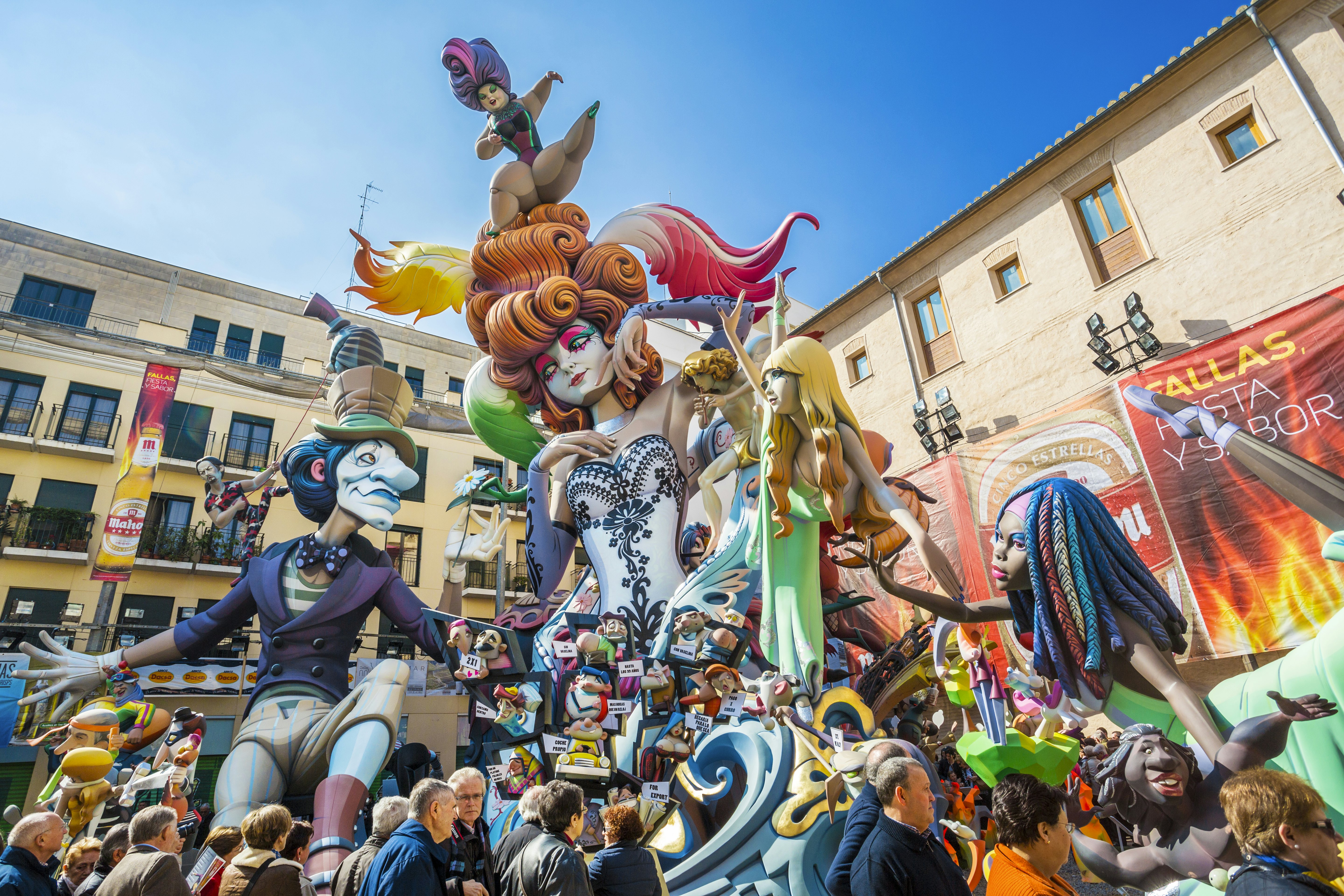
February and March are best for bike rides and fiery festivals
The mild weather of February lends itself to outdoor fun. Hire a bike and dash through pine-scented forests using the Vías Verdes: an extensive network of bike lanes made from old train tracks. Vía Verde de Ojos Negros starts at Teruel, and dips through rocky routes carved out for the old train which ferried iron ore from the mountains to Sagunto. The track traces verdant farmland, sun-dappled picnic benches and eerie old tunnels. To cycle a small portion of the route, take the train from Valencia to Navajas (around 1½hrs). From here it's a 6-minute walk to Camping Altomira, where there's bike hire and an all-day restaurant. Bikes cost around €15 per day, visit hardacho.com for details.
In March, flowers bloom in the Jardines del Turia and terraces fill with friends enjoying the extra hours of sunshine. It's the perfect weather for street parties, and the biggest one of all is Las Fallas, held around mid-March. This gunpowder-scented festival sees thundering pyrotechnics and gigantic papier-mâché sculptures crowd the streets. One of the highlights is Mascletà, a daily fireworks display that takes place in Plaza de Ayuntamiento. Over 100,000 people gather to witness the bone-shaking vibrations made by 330kg (0.36 tons) of gunpowder erupting in the square.
April to June is best for wine fairs and LGBTIQ+ Pride
With spring in full swing, there are oodles of open-air events to choose from. Sea temperatures rise to a refreshing 19°C (66°F) in May, and chiringuitos open from around mid-May.
For four days in April, the Jardines del Turia hosts an enormous wine-tasting party called Mostra Proava. Proava, the Valencian marketing body for locally produced products, brings together all the best wineries from the surrounding hills and plonks them in the leafy parkland from April 4 to 8. Find hundreds of bottles, artisan cheese and play areas for kids. Tickets cost €18, and you should book ahead as they tend to sell out.
June is LGBTIQ+ pride month in Valencia, with marches, protests and celebrations taking place throughout the city center. Check Lambda for the line up, which often includes free art exhibitions, make-up workshops and family-friendly festivals.








